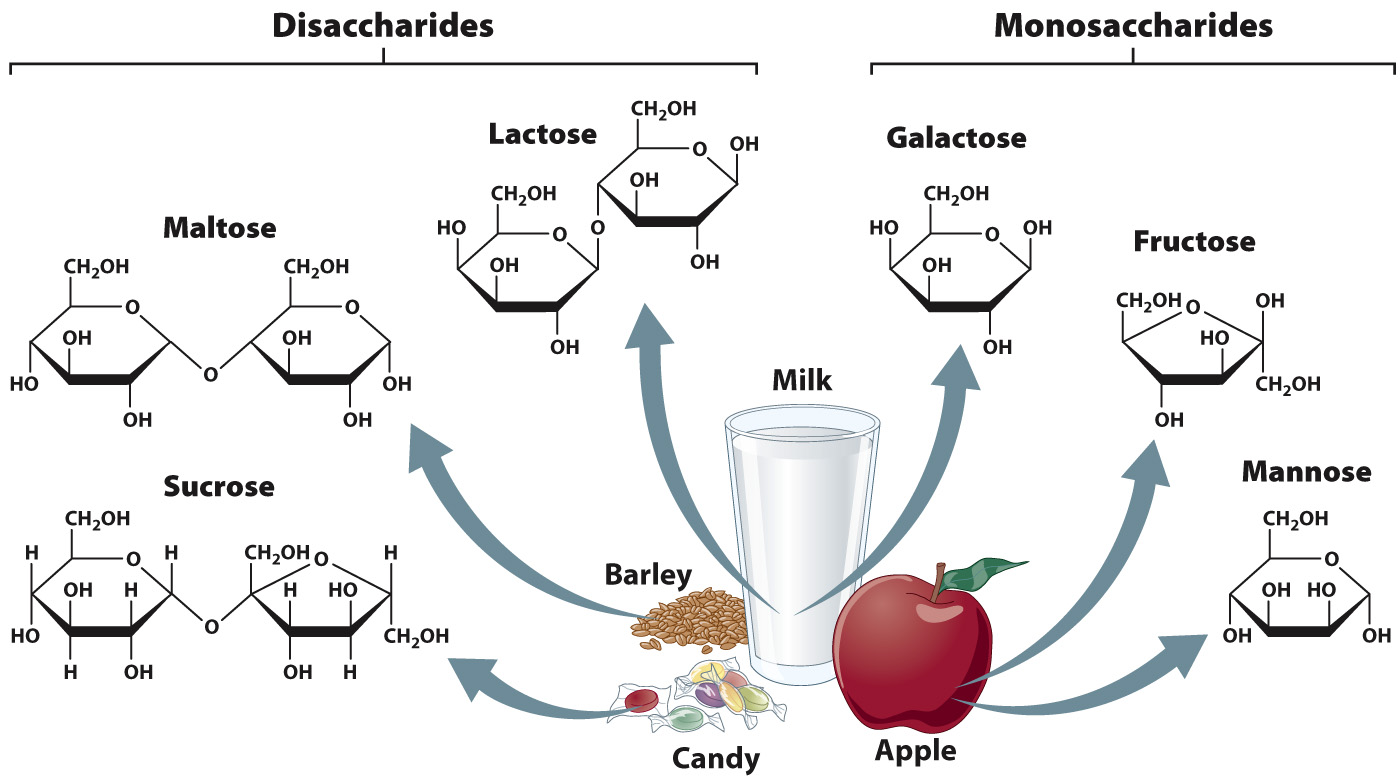Sugars other than glucose contribute to glycolysis.
The carbohydrates in your diet are digested to produce a variety of sugars (Fig. 7.17). Some of these are disaccharides (maltose, lactose, and sucrose) with two sugar units; others are monosaccharides (fructose, mannose, and galactose) with a single sugar unit. The disaccharides are hydrolyzed into monosaccharides, which are transported into cells.

The hydrolysis of some disaccharides produces glucose molecules that directly enter glycolysis. What happens to other monosaccharides? They, too, enter glycolysis, although not as glucose. Instead, they are converted into intermediates of glycolysis that come later in the pathway. For example, fructose is produced by the hydrolysis of sucrose (table sugar) and receives a phosphate group to form either fructose 6-
148